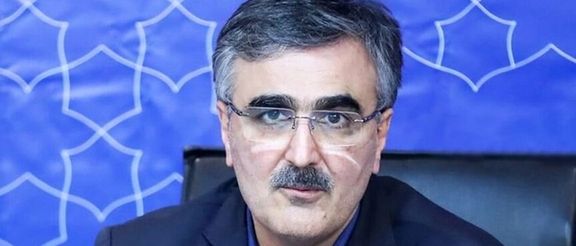Iran's Rial Recovers Some Lost Ground As New Bank Chief Intervenes

Iran’s battered currency regained 10 percent of its value Saturday after a new central bank chief assumed office following a drop to historic lows in December.

Iran’s battered currency regained 10 percent of its value Saturday after a new central bank chief assumed office following a drop to historic lows in December.
The US dollar dropped to below 400,000 rials from a high of 440,00 earlier this week, a 10-percent gain for the Iranian currency that has fallen more than 10-fold since 2018.
The new central bank chief Mohammad-Reza Farzin announced the bank’s intervention in the market as he began his first official day at work.
“The exchange rate in the open market is exaggerated,” he claimed, although an apparent massive infusion of dollars was needed to reverse rial’s precipitous decline. He added that economic fundamentals do not justify the currency’s fall, insisting that Iran sold $36 billion of oil in the past nine months.
Farzin did not explain why the rial has fallen to unprecedented lows if the country is flushed with hard currency, but he vowed “appropriate intervention” in the market to support the rial.
Even with Saturday’s rise, the currency is still 30 percent lower than in August and almost 50 percent less than in mid-2021, when the current hardliner president Ebrahim Raisi was elected and appointed other hardliners to top positions.
Rial’s current wave of decline began in early 2018 when the United States decided to withdraw from the Obama-era nuclear accord with Iran, known as the JCPOA and impose ‘maximum pressure’ sanctions. The country’s oil exports, its economic lifeline, and international banking came under US third-party sanctions, meaning that any company or country violating the restrictions could itself come under US sanctions.
The rila which was then around 34,000 to the dollar began to fall, with the government forced to offer cheap foreign currency to importers of essential goods, to protect people from an inflationary shock.
The government’s fixed-rate 42,000 rials for one dollar soon became a source of abuse by people who claimed to be importing essential goods, like food or raw materials, and instead imported luxury cars or simply turned around and sold the cheap dollars on the free market making huge profits.
The government began restricting the availability of dollars at 42,000 rials and earlier this year completely ceased the practice, saving around $15 billion annually, but accelerating food price inflation. In effect an important subsidy was removed, raising food, animal feed and medicine prices.
Following this inflationary shock, in early September talks with the US and its European allies to revive the nuclear deal fell apart, signaling a possible worsening of the economy. This triggered a new wave of rial’s de facto devaluation, as it fell in Tehran’s open market. Local reports also have mentioned accelerated capital flight from the country, which might have played a role in the sudden worsening of the exchange rate.
At the same time, nationwide antigovernment protests began in mid-September after Mahsa Amini, a young woman was killed in police custody. The popular uprising created a deeper feeling of instability and uncertainty.
Ali Shariati, a member of Tehran’s chamber of commerce predicted that the rial will be stabilized at 380,00-390,000 to the dollar by the government.
This might be the government’s goal, but to maintain the rial at that range, the central bank will have to continue injecting dollars into the market, a significant part of which simply leaves the country, to the tune of at least $10 billion annually.